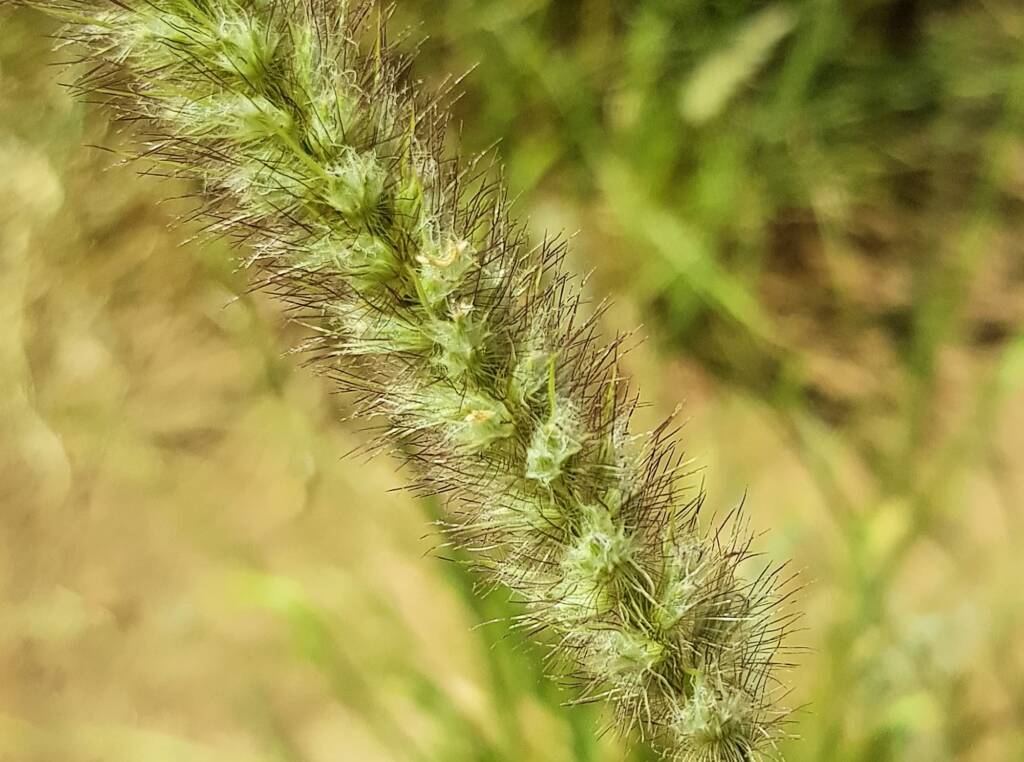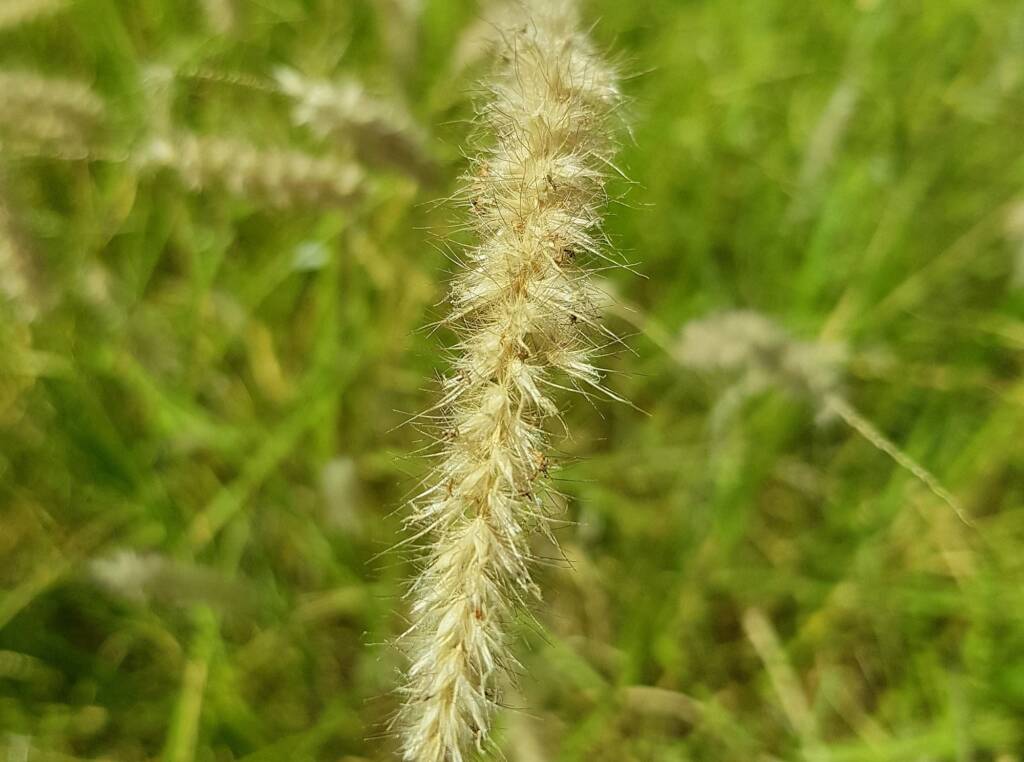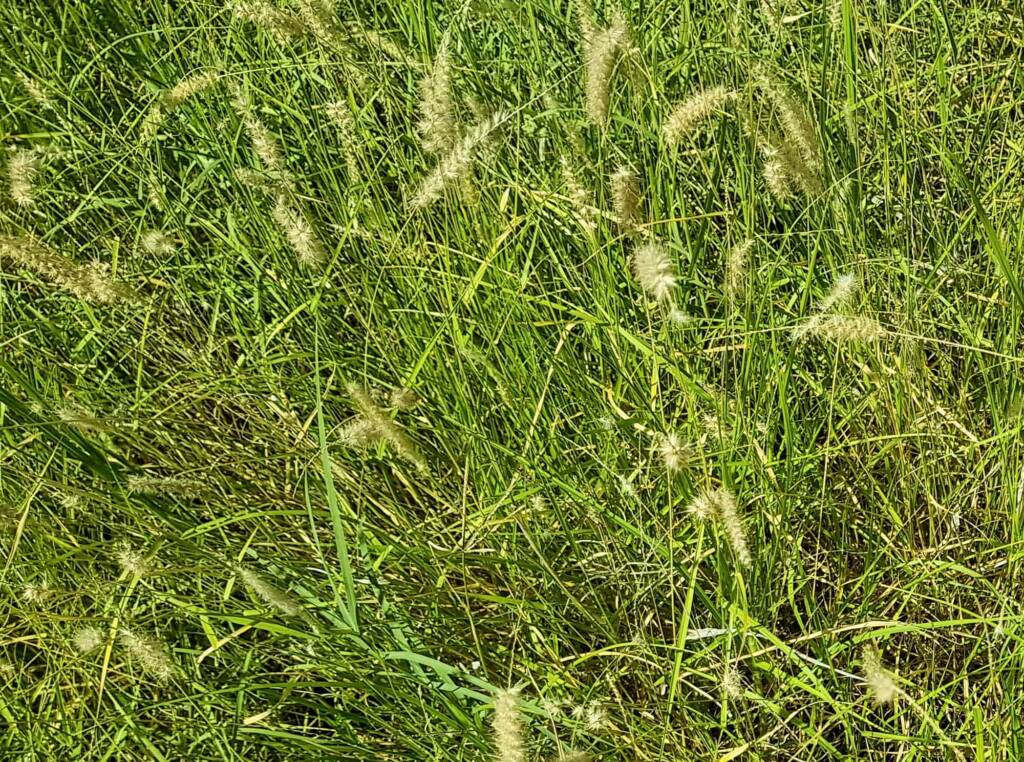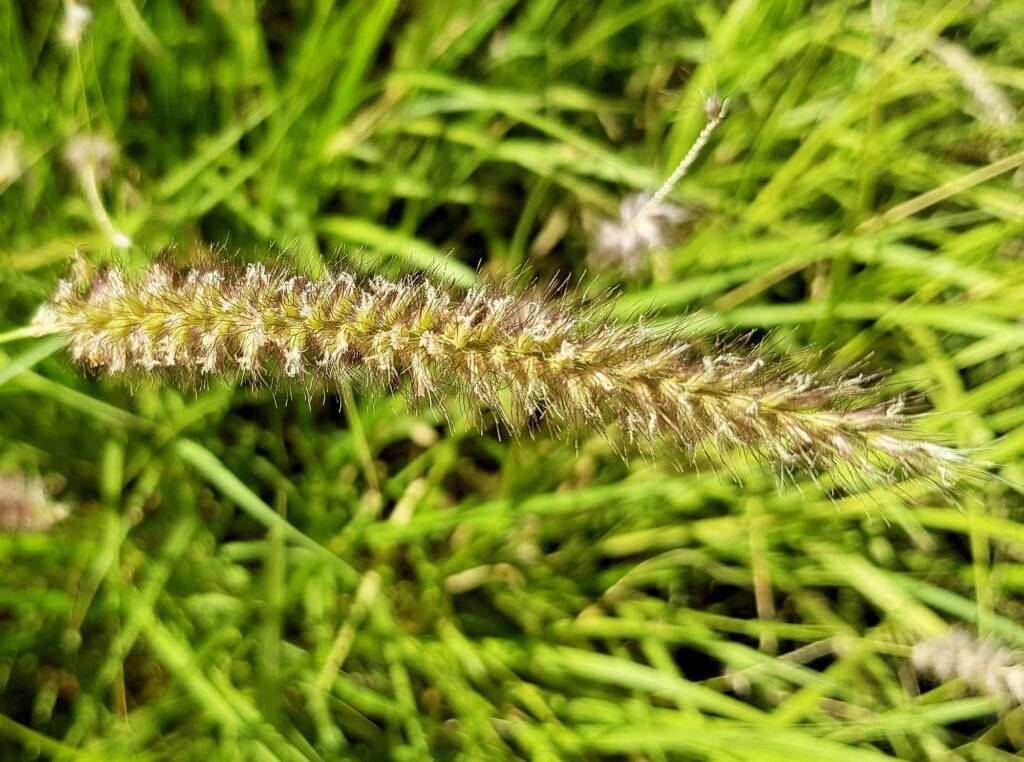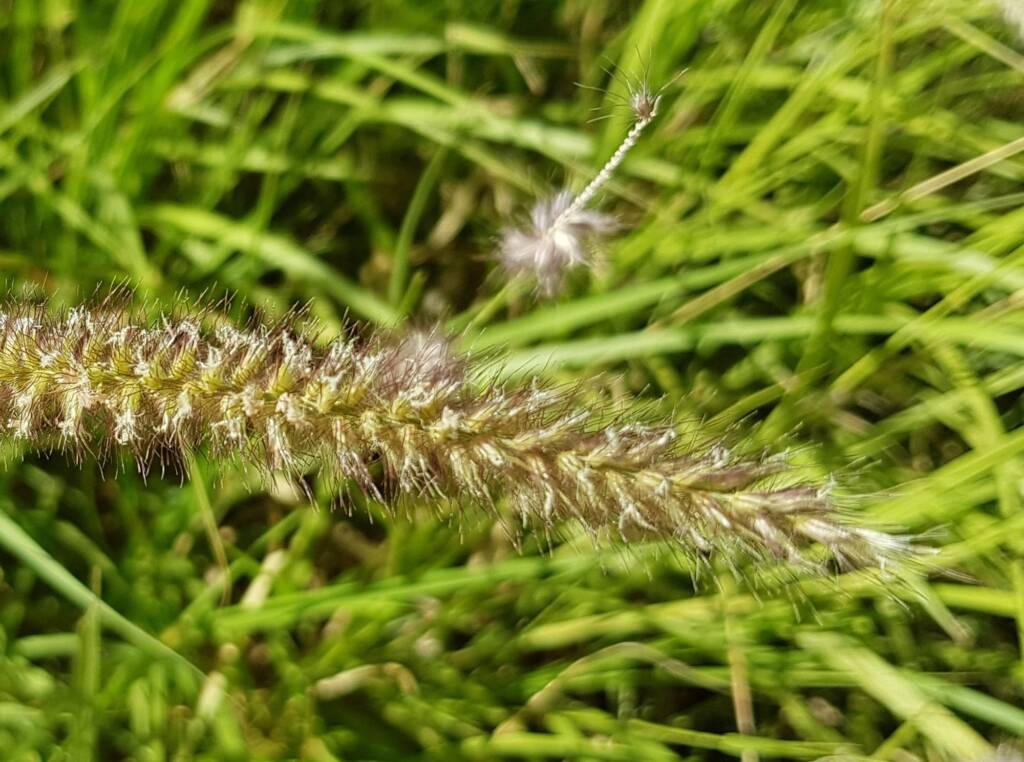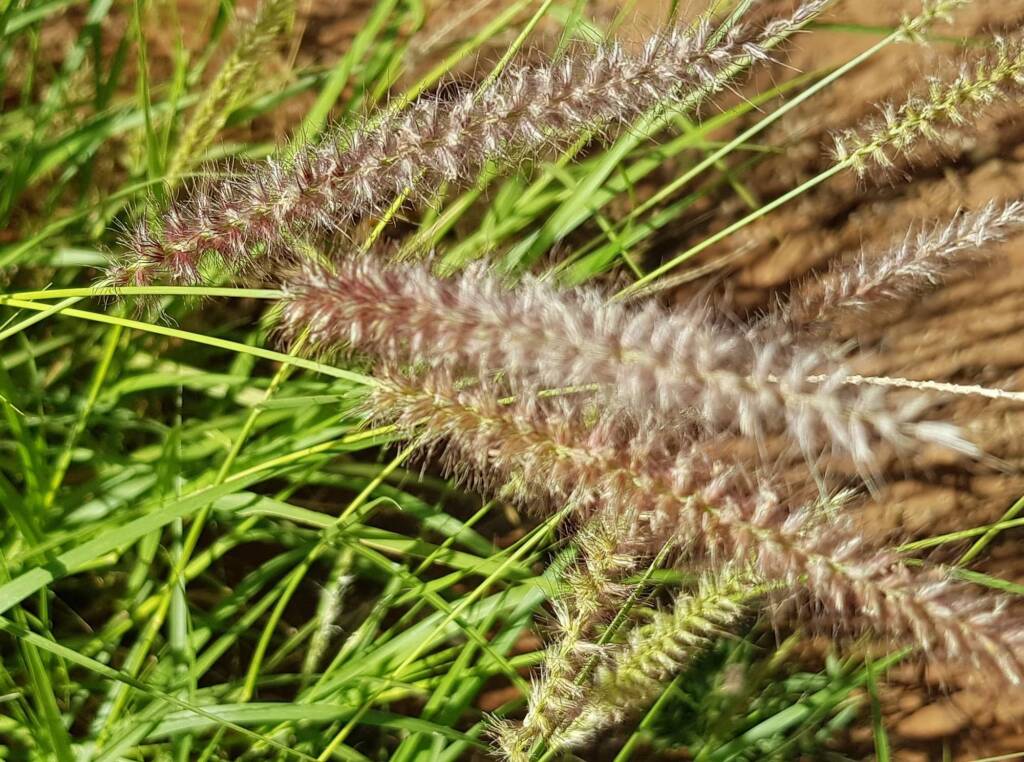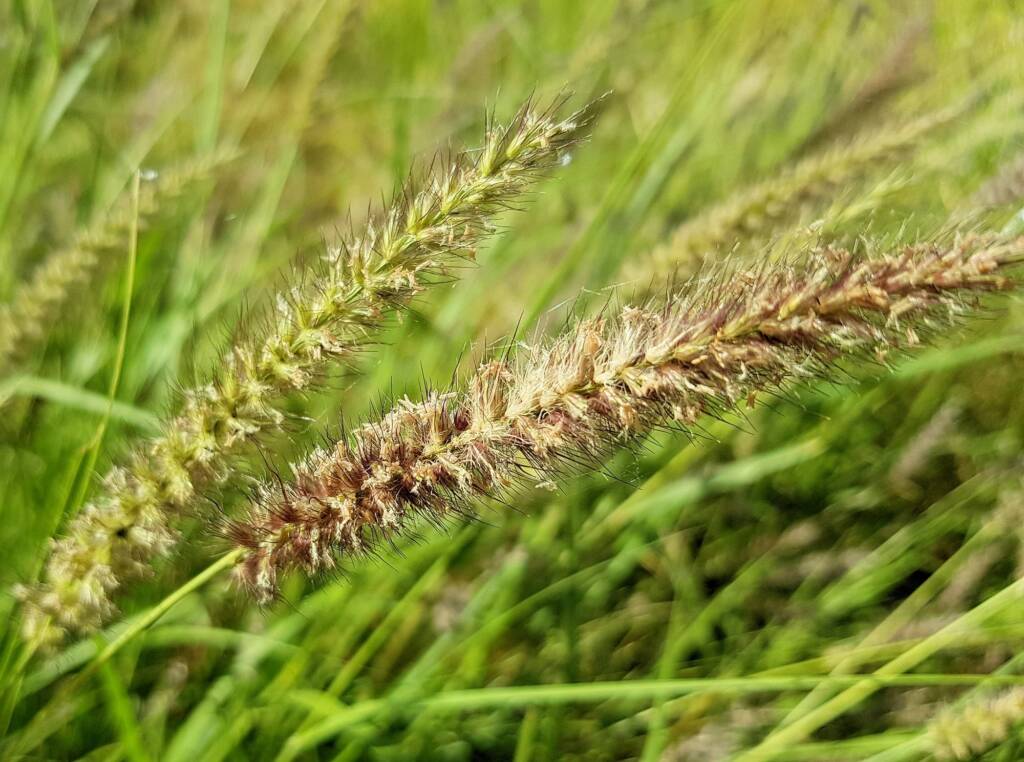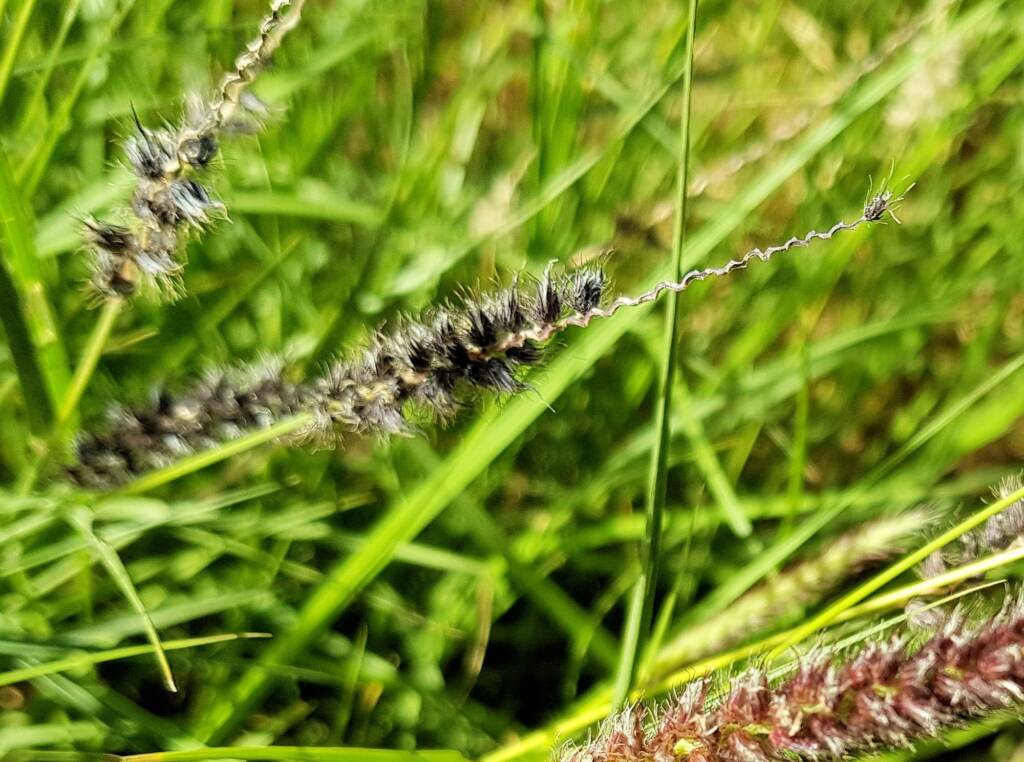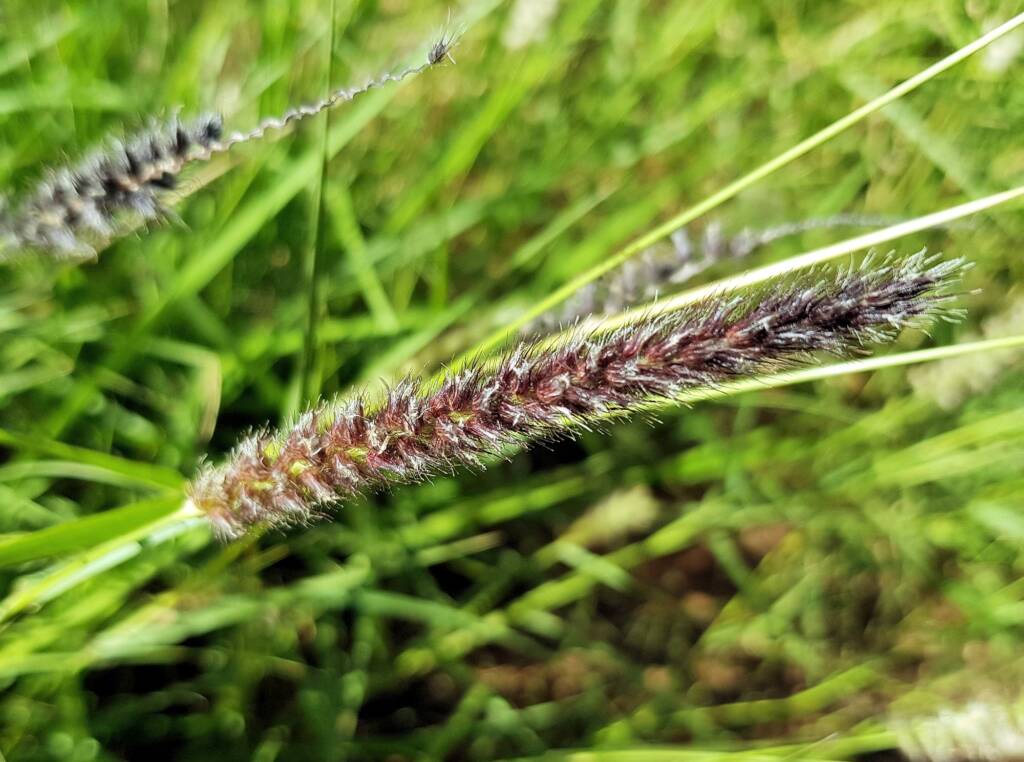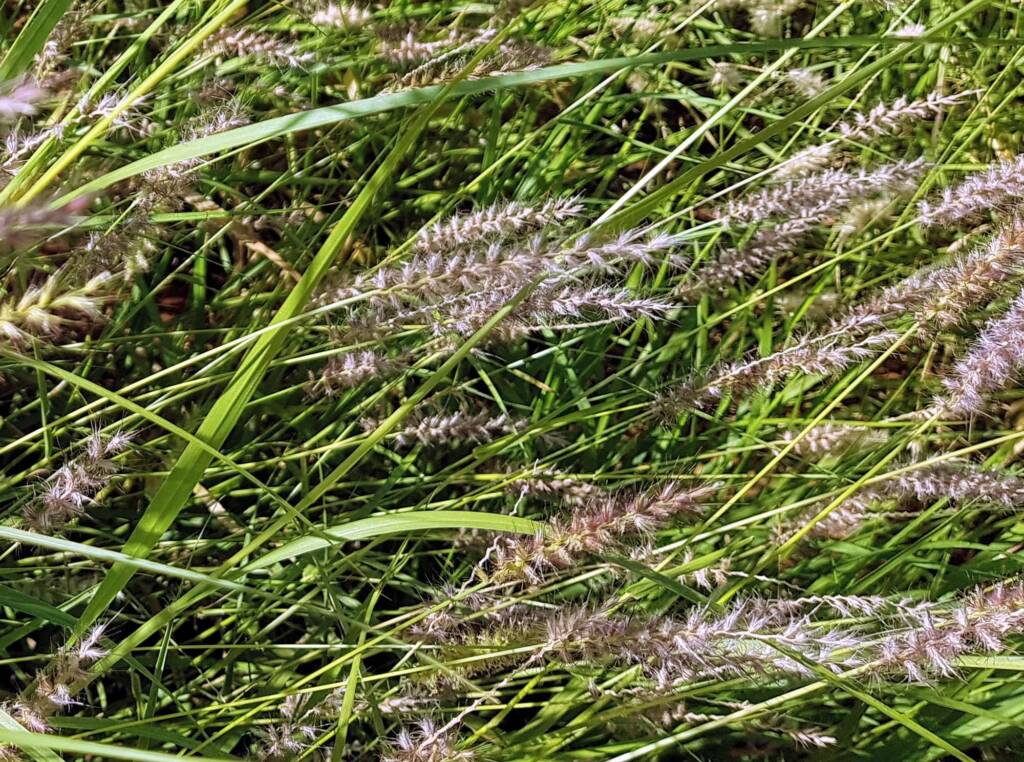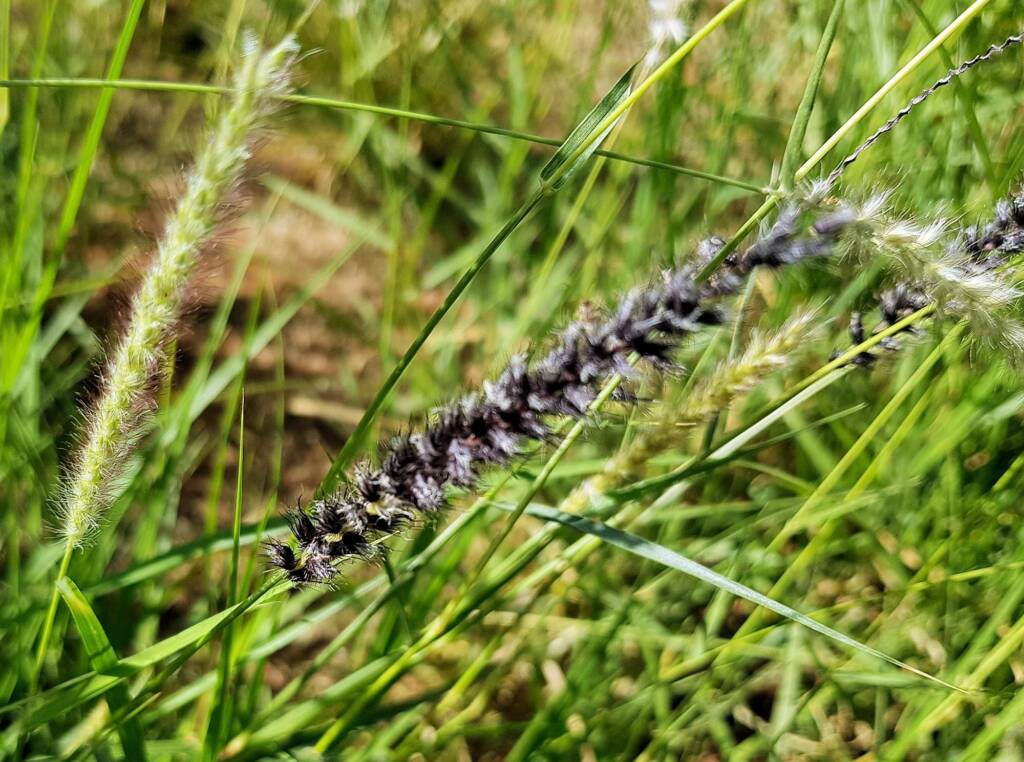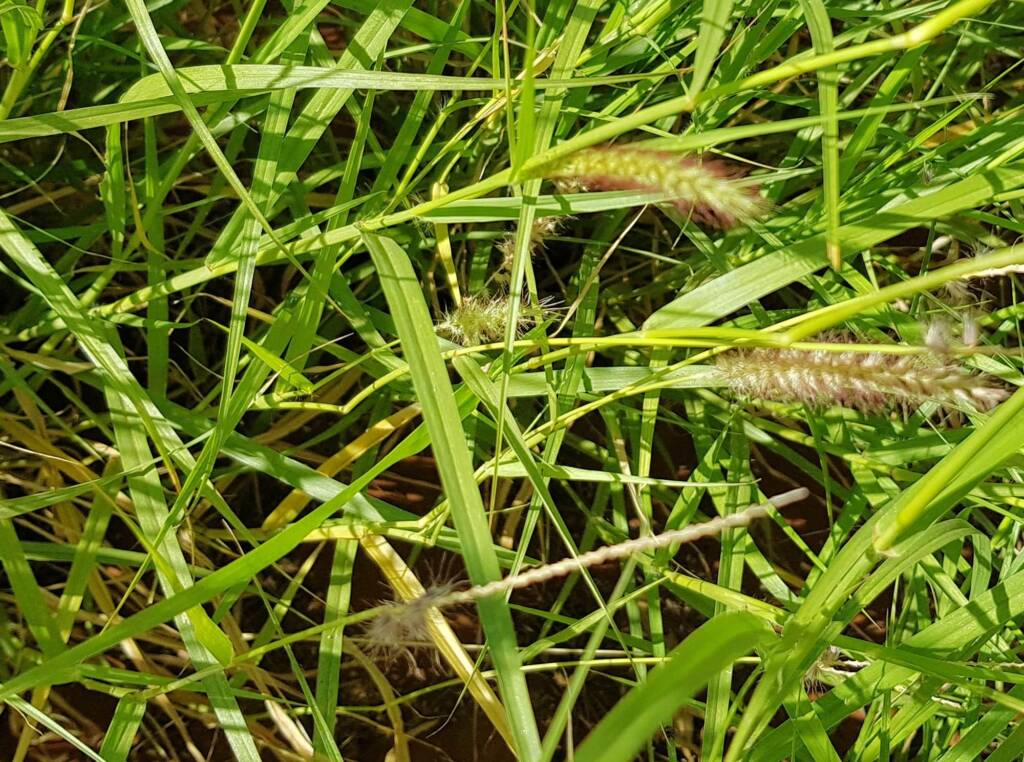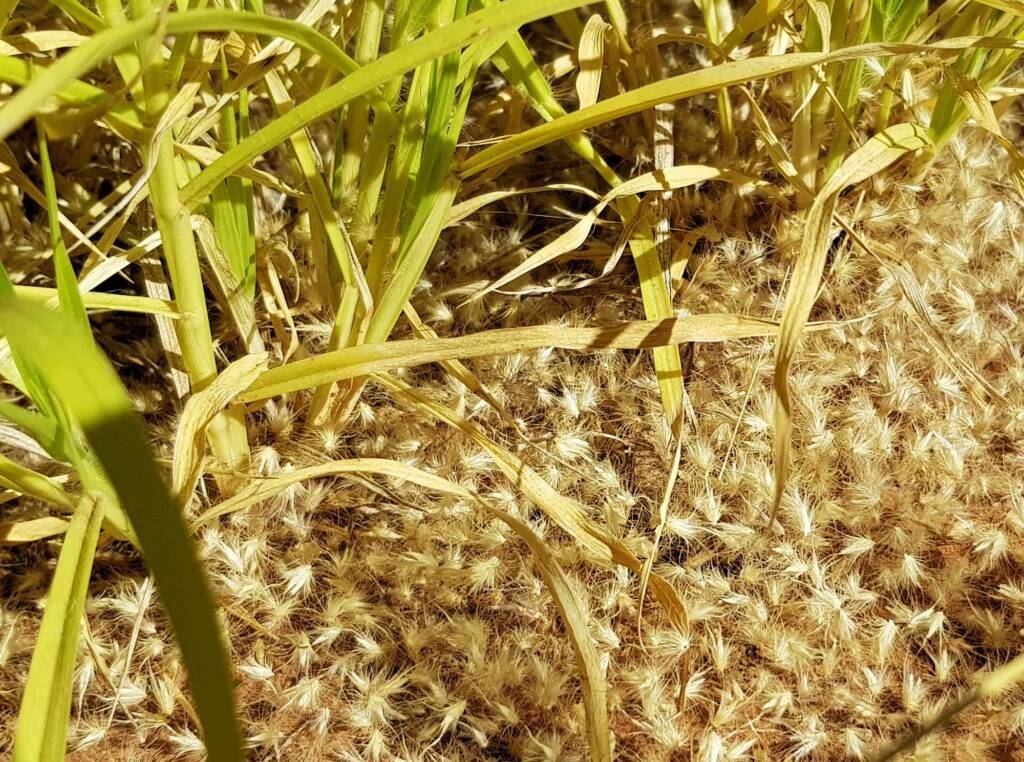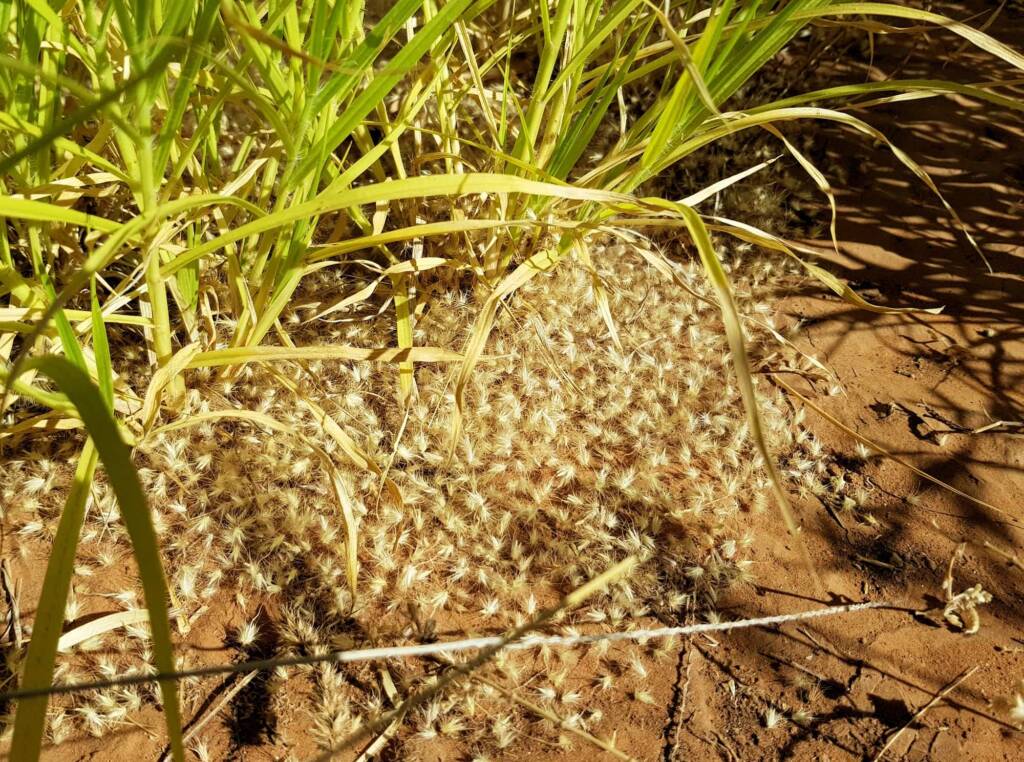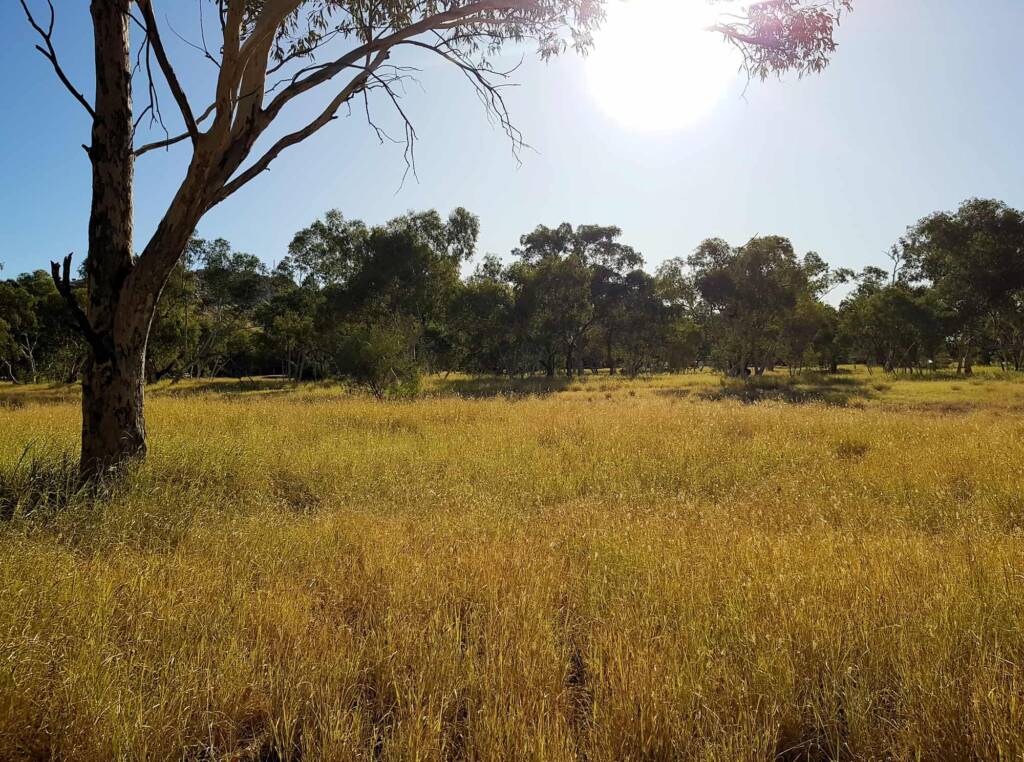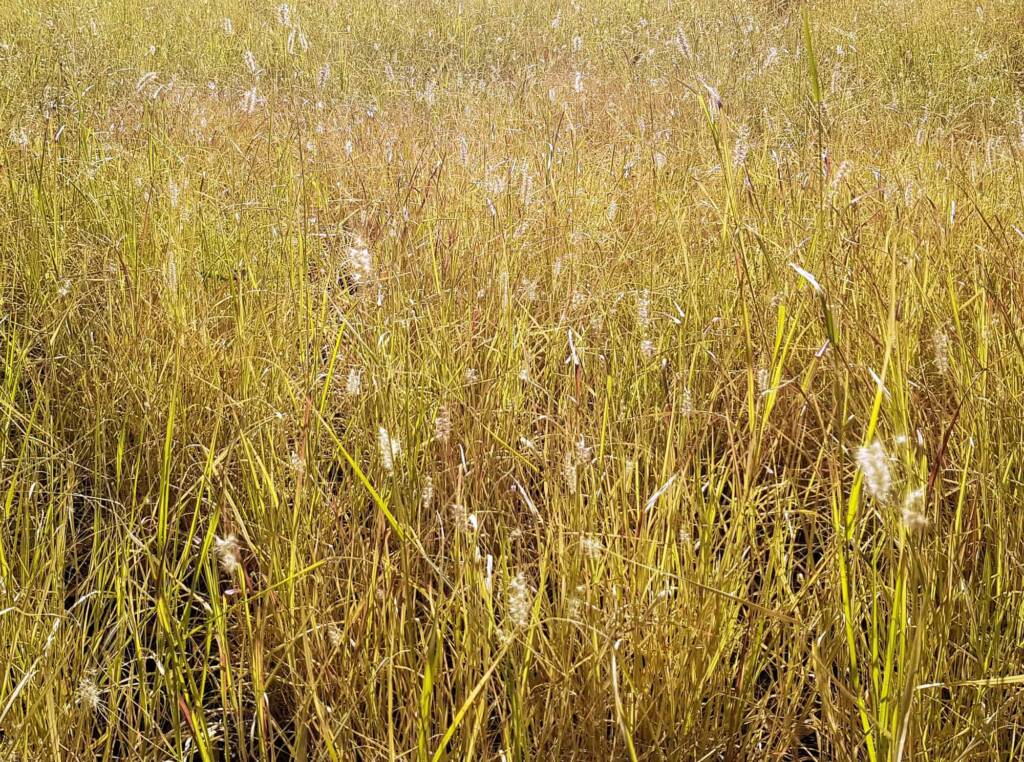Grass and GrassesBirdwood Buffel (Cenchrus setiger) Buffel Grass (Cenchrus ciliaris) Fairy Grass (Sporobolus caroli) Finger Grass (Chloris barbata) Kangaroo Grass (Themeda triandra) Silkyheads (Cymbopogon obtectus) Wanderrie Grass (Eriachne sp)
The Many Faces of Buffel
The Buffel Grass (Cenchrus ciliaris) is a plant that is native to parts of Africa and Asia and is first thought to have been inadvertently introduced to Australia in the 1870s along the routes of the Afghan cameleers. Buffels ability to establish and provided food for livestock, saw buffel widely introduced in Australia as pasture, for livestock production and to stabilise soils in land rehabilitation.
There are a number of different cultivars of Buffel Grass, varying in size, flower and seed characteristics. All are tussock forming grass, with some known to live for at least 20 years.1

Whilst it is still used and planted as pasture and stock, Buffel has spread widely across the continent and is a species that some ecologists have called ‘the botanical equivalent of the cane toad’.
An aggressive coloniser, buffel grass has displaced native species, as well as stripping precious nutrients out of the soil. Furthermore, buffel is highly flammable. In areas of infestation, buffel grass can burn so hot, creating wildfires that spread really rapidly, and transforming entire landscape, such as woodlands, into grasslands of a single species.
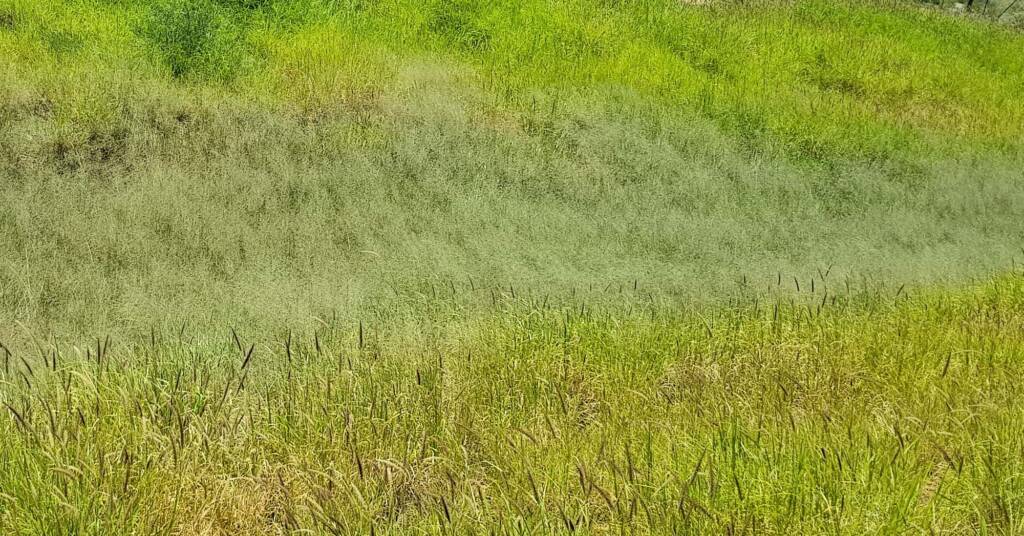
One can now consider Buffel Grass as a invasive species here to stay. Although it only had a moderate palatability, it was at the time well regarded as pasture because it grows rapidly and will persist under heavy grazing and drought.
Buffel grass has since spread well beyond those planted areas and is found across the Australian continent, even into the arid and semi-arid regions. It now dominate the ground layers of Australian native plant communities. It has reduced native plant diversity and created more hotter and fierce fire regimes.
In the arid and semi-arid regions of Australia, where climate is highly variable, it was planted for dust control. It is now realised that there is an economic cost associated with this grass specie, that include fire risks and management, especially to protect biodiversity assets. As well as effecting flora and fauna communities, there is further concern by pastoralists that the productivity of buffel grass dominated pastures will decline in the longer term.
This threat to biodiversity is now recognised with strategies being attempted across Australia, such as by the (SA Arid Lands, Rangelands (WA), Fitzroy (QLD) and the NT).
Buffel grass (Cenchrus ciliaris) is a tussock grass, usually perennial that can grow to a height of 1.5 metres tall. The leaves are flat and up to 30 cm long. The seed heads from a dense, hairy cylindrical spike.
Buffel grass can produce seeds quickly, with the tussock grass reshooting rapidly after a rain event, producing flowers one week later and seeds within three to four weeks. The seed heads then drop or are blown further afield by winds, collecting under the base of the existing tussocks, other native plants, shrubs and trees. They are also carried further afield by water run-off. The small bristles also enable the burrs to travel attached to clothing, animal fur, as well as mechanical machinery and vehicles.
Cenchrus pennisetiformis is commonly known in Australia as the Cloncurry, White or Slender Buffel Grass.
- Scientific classification
- Kingdom: Plantae
- Clade: Tracheophytes
- Clade: Angiosperms
- Clade: Monocots
- Clade: Commelinids
- Order: Poales
- Family: Poaceae
- Subfamily: Panicoideae
- Genus: Cenchrus
- Species: C. ciliaris
- Binomial name: Cenchrus ciliaris
- Species: C. pennisetiformis
- Binomial name: Cenchrus pennisetiformis
Footnote & References
- The Alice Springs Bush Regeneration Handbook, by Andy Vinter (2012), ISBN 978-0-646-58810-0, c/- Land for Wildlife and Garden for Wildlife, Alice Springs
- Buffel grass, Cenchrus ciliaris and Cenchrus pennisetiformis, Controlling weeds, Department of Primary Industries and Regions, Government of South Australia, https://www.pir.sa.gov.au/biosecurity/weeds/controlling-weeds/buffel_grass
- Buffel grass (Cenchrus ciliaris), Weed Management Guide, Department of Primary Industries (Archive), NSW Government, https://archive.dpi.nsw.gov.au/__data/assets/pdf_file/0005/347153/buffel-grass-weed-management-guide.pdf
- The buffel kerfuffle: how one species quietly destroys native wildlife and cultural sites in arid Australia, Authors Christine Schlesinger, Ellen Ryan-Colton, Jennifer Firn, John Read, 16 November 2020, The Conversation, https://theconversation.com/the-buffel-kerfuffle-how-one-species-quietly-destroys-native-wildlife-and-cultural-sites-in-arid-australia-149456
- Buffel grass management in the Alinytjara Wilurara Region, By Natural Resources Alinytjara Wilurara, March 2017, Landcare Australia, https://landcareaustralia.org.au/project/buffel-grass-management-alinytjara-wilurara-region/
- Buffel grass, Government of South Australia, https://pir.sa.gov.au/biosecurity/weeds_and_pest_animals/weeds_in_sa/weed_id/plant_id_notes/buffel_grass
- Buffel grass, Northern Territory Government, https://nt.gov.au/environment/weeds/weeds-in-the-nt/A-Z-list-of-weeds-in-the-NT/buffel-grass
- Buffel grass identification fact sheet, Northern Territory Government, https://depws.nt.gov.au/__data/assets/pdf_file/0007/404278/Buffel-grass-ID-sheet.pdf
- Cenchrus ciliaris, https://en.wikipedia.org/wiki/Cenchrus_ciliaris (last visited Mar. 21, 2022)
- Cenchrus pennisetiformis, https://en.wikipedia.org/wiki/Cenchrus_pennisetiformis (last visited Mar. 21, 2022
Grass and GrassesBirdwood Buffel (Cenchrus setiger) Buffel Grass (Cenchrus ciliaris) Fairy Grass (Sporobolus caroli) Finger Grass (Chloris barbata) Kangaroo Grass (Themeda triandra) Silkyheads (Cymbopogon obtectus) Wanderrie Grass (Eriachne sp)
SpinifexSoft Spinifex (Triodia pungens) Weeping Spinifex (Triodia brizoides)


